Nature Now! Cranefly Orchid
For immediate release ‐ February 10, 2021
Nature Now
Contact: Jessica Wackes, 919.707.9850. Images available upon request
By Jerry Reynolds, Head of Outreach
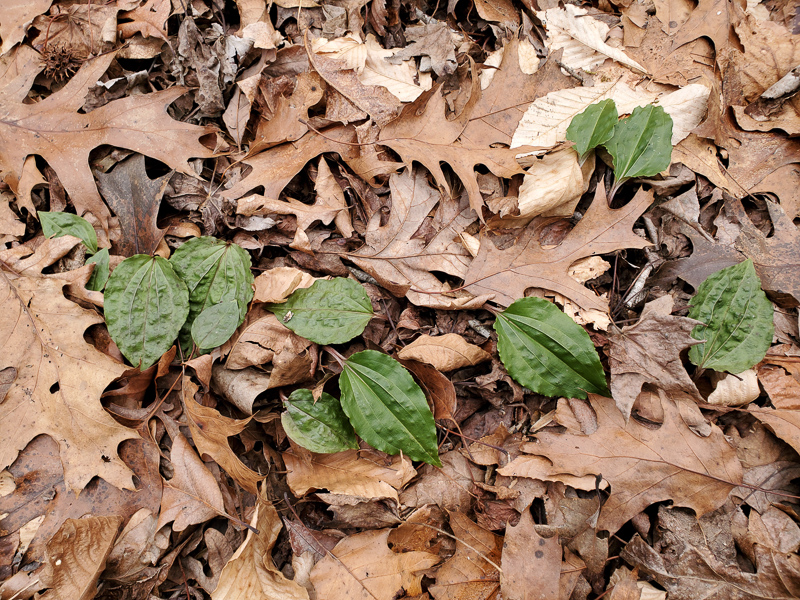 Cranefly Orchids on the winter forest floor.
Cranefly Orchids on the winter forest floor.
Spring is right around the corner, but there are still plenty of days to enjoy the winter forest landscape. Now is a great time for a walk in the woods illuminated with full sunlight coming through the mostly leafless forest canopy. Of course, all those leaves that were once in the canopy are now on the forest floor crunching under your footsteps. If you pay attention to your path, you might see some green leaves mixed in with the tan and brown leaves of now-dormant trees. If so, you may have found one of our native orchids.
The Cranefly Orchid, Tipularia discolor, is common in forests across North Carolina but is seldom recognized by most people walking in the woods. This is a very non-assuming orchid, unlike some other orchids that dazzle us with their flashy beauty when in bloom. This orchid also has an interesting lifestyle that further cloaks its existence. You may be thinking by now that this is a very hard wildflower to identify. Surprise! This is actually one of the easiest orchids to find and identify.
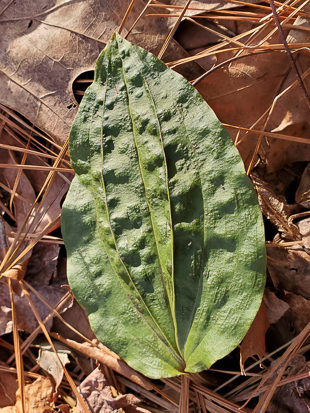
Cranefly Orchid leaf.
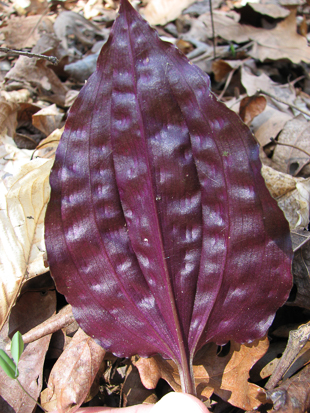
Cranefly Orchid leaf showing purple color on underside.
The green leaf of the Cranefly Orchid may appear singly or in a small group. They can vary in shades of green and some have dark spots or bumps, mottling the surface. Their elliptical shape and parallel leaf veins make them easy to discriminate from the heart-shaped leaves of heartleaf (Hexastylis) that you also might find on the forest floor. The identification cincher is that when you turn the leaf over, most will be a rich purple underneath. Expert naturalist Jesse Perry would demonstrate this characteristic in the field by saying the Cranefly Orchid leaf is green on the top but turning it over, “it’s discolor underneath,” having some fun with the scientific name.
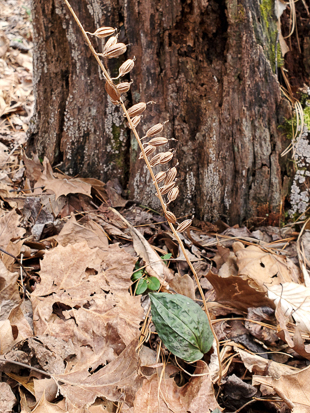
Old flower stalk still standing with a winter leaf.
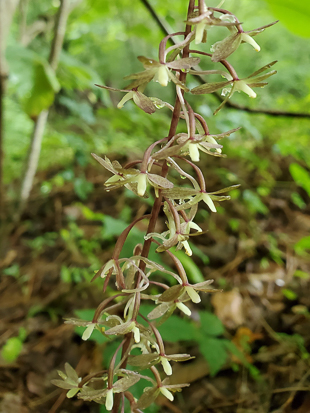
Small flowers of Cranefly Orchid in summer.
You can find them in the dead of winter when all other wildflowers are completely hidden from view, patiently waiting for their moment in the light. The green leaves of the Cranefly Orchids that you find mixed in with the dead leaves on the forest floor have been there all winter. They emerged from the forest floor when the tree leaves were falling from the trees. The Cranefly Orchid is taking advantage of the full sunlight reaching the forest floor during the winter to produce their food through photosynthesis while most other plants are dormant. You can sometimes see old flower stalks from the previous summer still standing with the green leaves in the winter.
By summer the orchid’s leaf has withered away. Its winter task is done. A single stalk with 20-40 small flowers will sprout where the green leaf once was. The pale yellowish-green flowers are about an inch long, not attracting much attention on the forest floor. They superficially look like small craneflies, hence the name. Many people would walk right by this plant in full flower and not even notice it. Some would not realize that it is even a green plant since the leaf is usually gone.
Get out in the woods in the remaining days of winter and look for Cranefly Orchids. Just pack some patience, as you will have to wait until summer to see it in bloom.
For more information about our upcoming activities, conservation news and ground-breaking research, follow @NaturalSciences on Instagram, Twitter and Facebook. Join the conversation with #visitNCMNS.

